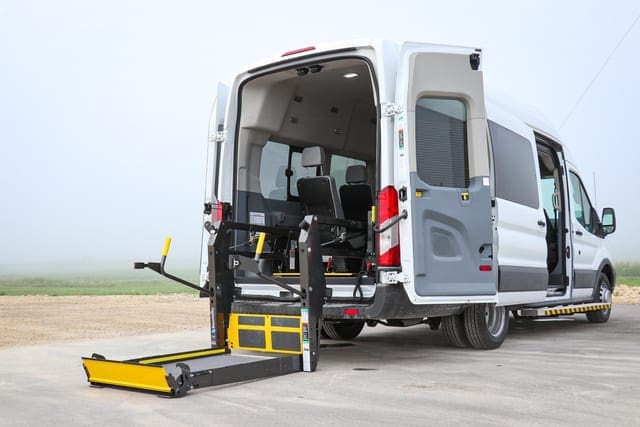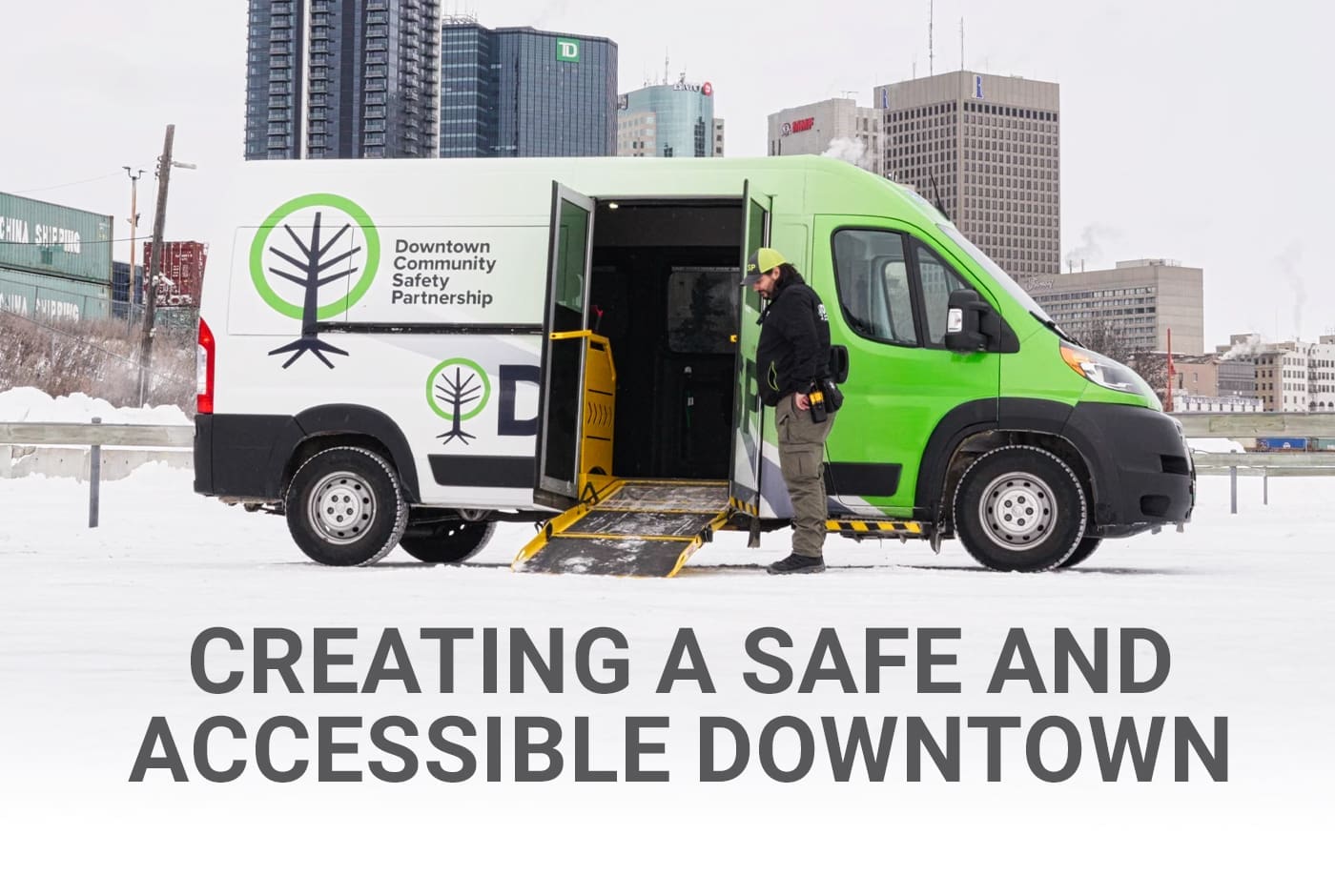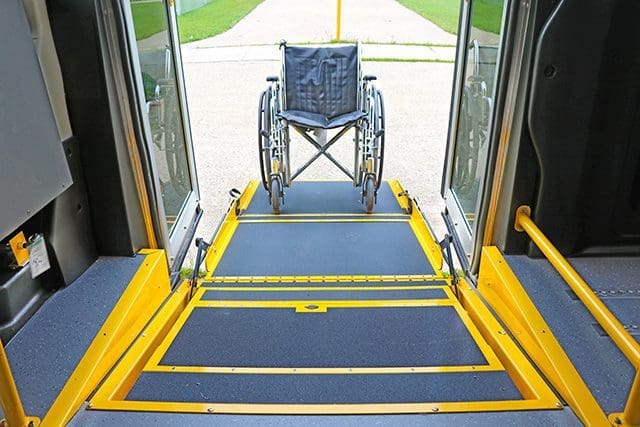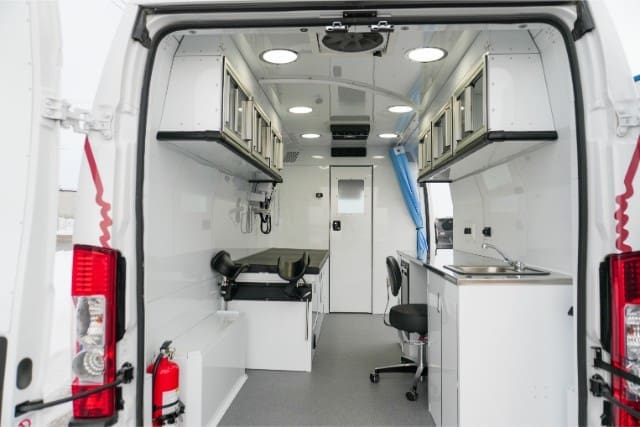Did you know some powered wheelchairs weigh over 400 pounds? That’s before adding the person using it. When you’re buying a wheelchair van with a lift, this is something you really need to think about.
The weight capacity of a wheelchair van lift isn’t a number you can ignore and shrug off. It’s a safety issue. If the lift can’t support your client and their wheelchair, it can fail. The last thing you want is someone getting hurt because the lift couldn’t handle the load. That risk is real, and so is the chance of damaging your van or hurting your organization’s reputation.
You’re likely an organization that helps people every day. Maybe you manage a non-profit, a health clinic, or transportation for a care home. You want to give people a safe ride, but figuring out lift specs can feel overwhelming. We understand that pressure.
At MoveMobility, we’ve been building wheelchair vans and mobile medical units in Canada for over 20 years. We hold Ford QVM and Stellantis Q-Pro certifications, and our vehicles are trusted nationwide to help reduce barriers. While we know we’re not your only option, we’ve worked with many organizations like yours and Loft.
In this article, you’ll learn all about the weight capacity of a wheelchair van lift so you can start transporting people confidently and safely.
Weight capacity of a wheelchair van lift: What is it?
At MoveMobility, the weight capacity of a wheelchair van lift is 1,000 pounds, including both the person and their wheelchair.
Most powered lifts in wheelchair accessible vans are built to hold this amount. Some might support a little more, but 1,000 pounds is the standard across most vehicles in Canada.
Why does this matter so much?
The weight capacity of wheelchair van lifts is all about safety, trust, and keeping your van running smoothly.
Here’s why knowing the lift’s weight capacity is so important:
- Safety first: If the person and their wheelchair are too heavy for the lift, the lift can stop working or even break.
- Avoid breakdowns: Replacing or fixing a broken lift can be expensive and time-consuming.
- Protect your reputation: If you transport clients, a lift failure can hurt your organization’s image.
- Plan ahead: Some power wheelchairs weigh over 300 pounds. Add a person and you’re near the limit.
Imagine your organization buys a used wheelchair van. The lift looks fine, but you don’t know the weight capacity. You take your first client for a ride. They roll onto the lift, and you press the button. The lift goes up, but halfway through, it jerks, stalls, and stops.
Now your client is stuck in the air. They’re scared. You’re embarrassed. The lift might be damaged. All of this could have been avoided by knowing the lift’s weight capacity.
So, before you choose a wheelchair van from any manufacturer or dealership, make sure to ask: What’s the weight capacity of the wheelchair lift?
That one question can save you from a lot of stress down the road. Another important consideration to keep in mind is the size of the wheelchair lift platform. Keep reading to learn more about that in the next section.
What is the size of the wheelchair lift platform?
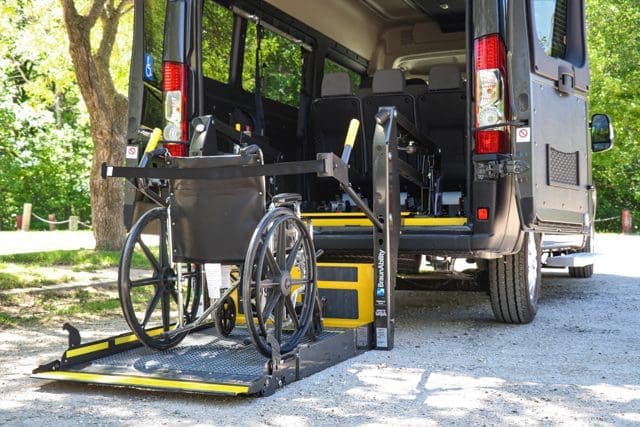
The standard size of the wheelchair lift platforms at MoveMobility is 34 inches wide by 54 inches long.
This size works for most manual and power wheelchairs. The platform folds and unfolds quietly and stays stable while it moves. That helps keep riders safe and calm during the lift.
Why does platform size matter?
Not all wheelchairs are the same. Some are wide. Some are long. If your lift is too small, you won’t be able to use it safely or at all.
Here’s why knowing the platform size is so important:
- Wheelchairs must fit fully on the platform to be lifted safely.
- Platforms that are too small can cause safety issues or even damage a wheelchair.
- Clients may feel unsafe if their wheels hang over the edge.
- Returning or replacing a van because of the wrong lift size is costly and stressful.
Picture this: You’ve just bought a wheelchair accessible van. You’re excited to put it to use. But on the first day, your client rolls up in a wider powered wheelchair. You go to lower the lift, only to realize that their chair doesn’t fit on the platform.
Now what?
You feel stuck. Your client feels frustrated. You can’t transport them, and you may even lose their trust. That’s time, money, and reputation all on the line.
That’s why, before you buy, make sure to ask: Will the wheelchairs I transport fit on this lift platform?
It’s a small question, but it can save you from a big problem.
What safety features do wheelchair van lifts have?
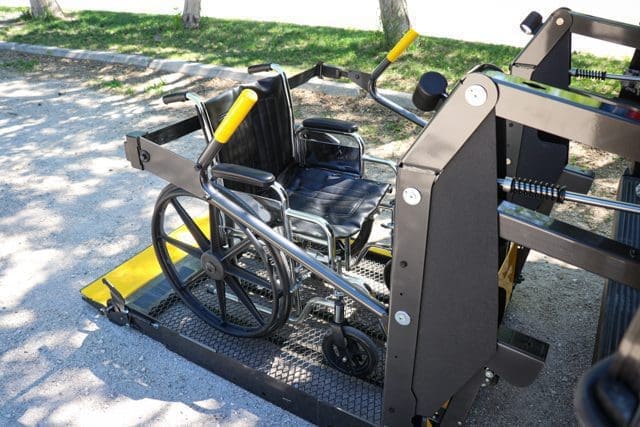
Wheelchair van lifts come packed with safety features to protect both your clients and your team.
Here’s what you need to know right away: A quality wheelchair lift is made to make your job easier and safer. It’s built with features that help prevent injuries and give your riders a smooth, stress-free experience.
Let’s break it down:
- Built-in safety belt: Keeps the wheelchair secure on the platform during the lift.
- Spring-loaded roll stop: Acts like a gate to keep the wheelchair from rolling off.
- Flat platform surface: This makes it easy to roll a wheelchair on. That means no hard pushing or lifting is needed.
- One-button controls: The driver or support worker doesn’t need to strain or guess what to do next.
Consider this scenario: You buy a wheelchair van, but the lift doesn’t have a roll stop or safety belt. One day, a client’s wheelchair starts to slide back as the lift moves. That moment of panic could lead to injury or a shaken sense of trust.
Or picture a staff member trying to guide a chair up a steep ramp. They slip. That could be a hospital visit and a lot of stress you didn’t need.
That’s why safety features are a must when looking at wheelchair vans with lifts.
Looking for a wheelchair van lift that’s safe and reliable?
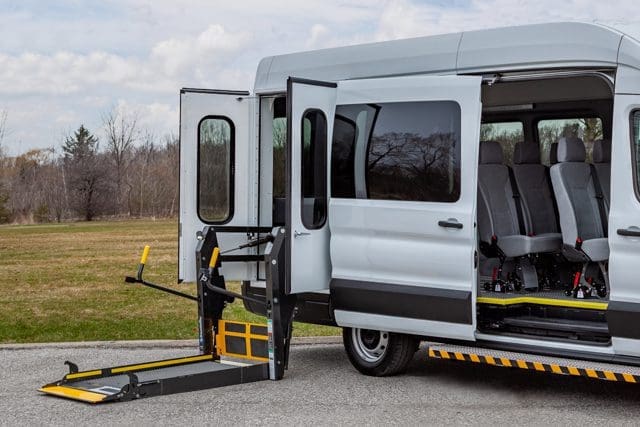
You came to this article because you had questions about wheelchair lifts. Maybe you weren’t sure what to look for or wanted to avoid choosing the wrong lift for your van. You needed clear answers to help make the right choice.
Here’s a quick recap of what you learned:
- Weight capacity is important to keep riders safe and protect your equipment
- Platform size matters to make sure every wheelchair fits
- Built-in safety features protect both your riders and your staff
- The right lift makes things easier for drivers and support teams
At MoveMobility, we build accessible vans that help organizations bring care and dignity to the people they serve. Every lift is installed by trained technicians. We work closely with you to understand your needs and make sure the lift in your van meets them. We know your work matters, and we want to help you keep people safe and comfortable every day.
If you have more questions about how to choose a wheelchair van lift that fits your needs and gives you peace of mind, click the button below to talk to a mobility expert.
Not ready to talk just yet? That’s okay. We’ve got more helpful resources you can check out to keep learning.
Start by checking out our article or video below on ramps vs. lifts. This will help you decide which one will work better for your organization.
After that, read our article on wheelchair van regulations. Knowing about this will prepare your organization against any confusion in the future.


